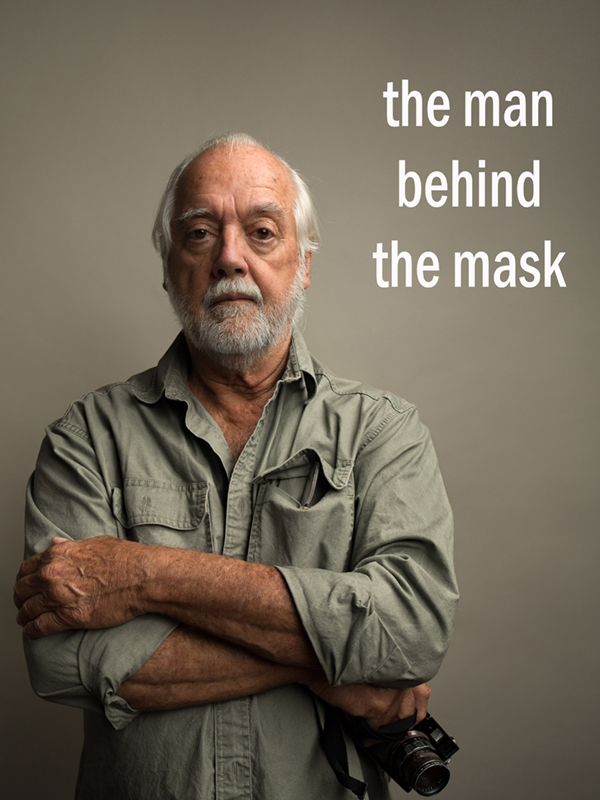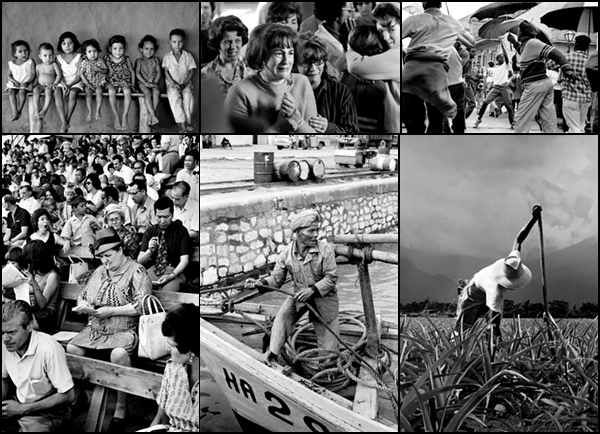PEOPLE AMONG US - Photography by Leo Touchet (Exhibit Article)
Acadiana Profile Magazine(August-September 2017)
by Will Kalec
Photo Copyright © 2017 Danley C. Romero
Abbeville photographer Leo Touchet shares tales from the road at Acadiana Center for the Arts exhibit
Though it may sound trite, the camera offered Leo Touchet a window to the world that stretched far beyond the farms and two-lane roads of Abbeville, a small town now and an even smaller town during Touchet’s formative years.
Through a viewfinder Touchet saw a child dressed in tattered clothes inside a Honduran schoolhouse peeking over the shoulder of his classmate for a homework answer; two representatives of different generations sitting side-by-side on a Rockefeller Center bench; and an elderly couple staring at their racing forms at the old Evangeline Downs back in 1973.
Together, these pictures represented three images from Touchet’s portfolio selected from a pool of 500,000,
all taken between 1965 and 1994, and displayed this summer at the ACA exhibit Leo Touchet: People Among Us.
For two months, friends and museum curators went through Touchet’s expansive catalog, narrowing down
candidates until there were 34 images, to cover four walls.
However, a number of those they left out were some of my favorites, so I slyly put them back in,
Touchet says.
As captivating as those exhibit images are, reducing Touchet’s camera to nothing more than his ticket
is a
bit generic and unjust. The seasoned photographer, reflecting on a 40-year career and upcoming second act
inspired by Sir Elton John’s recent photo acquisition, now understands that for him the camera was cover
for a shy, introverted young man, allowing time for the eccentric storyteller within to blossom.
In a sense, the camera became like a mask for me,
Touchet says. Using the camera, and having it between me
and whatever I was looking at, I had a mask on. That’s kind of the way I felt about it. I was always aware that
there was more out there beyond what I grew up around, but I would have never seen it without a camera. But not
because I couldn’t go there, but because I wouldn’t have had, I guess, the confidence to do it without the camera.
The story of how Touchet became a photographer hints at the romanticism of a bygone era, before everyone carried cameras around in their pocket and when photo captions didn’t include hashtags. In 1964, Touchet was a disillusioned employee at an industrial design firm on Park Avenue in Manhattan. One day, he went to the Museum of Modern Art and paid particular attention to a photography exhibit.

That was on a Sunday,
Touchet says. On Monday I went out and bought a camera.
From there, Touchet met the photo editors of LIFE Magazine — the photographer’s Carnegie Hall back then — through a guy he became friends with at a bar (true story). That chance encounter led to a plum gig photographing in Vietnam for UNICEF, making him one of about two dozen capturing the infant moments of the struggle between the split nations.
In 1972, Touchet met his idol, French photographer Henri Cartier-Bresson, who actually criticized him for mirroring his style.
Well, I learned from your stuff,
Touchet responded to the Frenchman. That’s what happens.
Cartier-Bresson smiled, then later suggested Touchet return home and capture images of his own Cajun people. Touchet followed the advice, which is why much of his photo catalog looks so familiar to Acadians.
Throughout the years, Touchet’s images — a few of which he captured despite having a gun to his head and a knife at his neck — appeared in LIFE, TIME, The New York Times, The Washington Post, Fortune, The Boston Globe and U.S. News & World Report.
Ultimately, when programs like Microsoft Corbis crushed the economic viability of Touchet’s decade-long hustle, he put down the camera and started a woodworking practice in the later 1990s and early 2000s.
The thing about it is, your own eyes can always see more than the camera allows you to see,
Touchet says.
And when I put it down for a while, I put photography out of my mind, because if I kept it there it’d be
somewhat depressing. I concentrated on other things, because I knew I couldn’t make a living [on photography]
anymore. But I never lost the urge to photograph.
The now grizzled camera vet is getting back into the swing of things recently, capturing images while vacationing in the Olympic Peninsula of Northwest Washington.
What I miss — yeah sure, the travel — but it’s mostly the unknown,
Touchet says. That’s what I missed.
Everywhere you turn, it’s something new. Whereas, when you’re say wood-working, you’re in one place, seeing
the same things even if you’re still creating.
Pictures are everywhere, that’s the easy part,
Touchet says.
I looked at the world in a whole different way once I got that camera,
Touchet says. Before, I just wanted
to go see places. Now, with the camera, I wanted to go places and do things.

